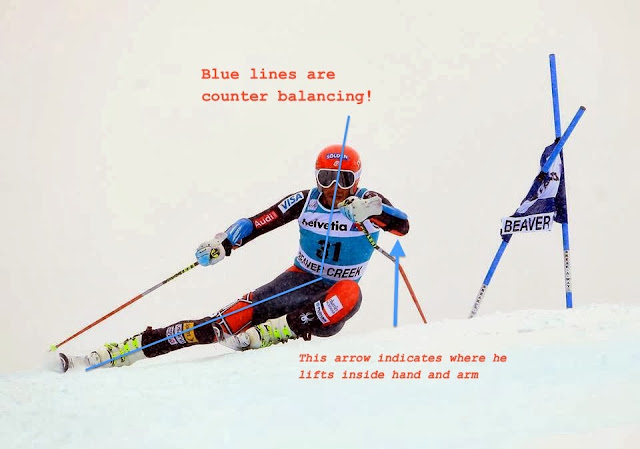- Joined
- Apr 18, 2018
- Posts
- 16
I thought I would start a thread on shaped skiing. A bit of background first. I work as a ski instructor and have for the last 4 years. I started skiing a good 37 ish years ago. Had some basic race training as a kid and my father worked at a ski area for 4 years. One thing I have always heard over the years was lean forward, put pressure on the down hill ski. Ironic or not I became very proficient at A frame skiing. Something I have done for a good 36 ish years. I've managed to race on leagues and teach skiing yet never got away from A frame skiing till recently. Of course I missed quite a few years of skiing and then jumped onto shaped skis. Obviously I came back to skiing with a lot of bad habits from old skis. Also a bad understanding of what needs to happen.
You can put all the pressure you want on the down hill ski. You can lean forward all you want it's not going to give you more angles. It also will not keep you from A frame skiing no matter how much you shrink that inside foot. Recently I started working from the feet up and something happened. The A frame went away. Hip alignment resolved itself. Once I heard start from the feet then move up and it makes so much sense. I am frustrated as an instructor that we don't teach pinkie toe leads the way. Everything starts from the feet, the inside foot to be more specific. From the shortening of the inside foot to putting pressure on the pinkie toe. It leads the initiation of the turn the outside ski follows, it doesn't lead. Why do more people not talk about the importance of inside foot?
If you have someone who can't get out of a wedge have them point the inside knee out. All the sudden the wedge will go away. It's really the key to moving from a beginner to an intermediate skier yet it's never really talked about.
You can put all the pressure you want on the down hill ski. You can lean forward all you want it's not going to give you more angles. It also will not keep you from A frame skiing no matter how much you shrink that inside foot. Recently I started working from the feet up and something happened. The A frame went away. Hip alignment resolved itself. Once I heard start from the feet then move up and it makes so much sense. I am frustrated as an instructor that we don't teach pinkie toe leads the way. Everything starts from the feet, the inside foot to be more specific. From the shortening of the inside foot to putting pressure on the pinkie toe. It leads the initiation of the turn the outside ski follows, it doesn't lead. Why do more people not talk about the importance of inside foot?
If you have someone who can't get out of a wedge have them point the inside knee out. All the sudden the wedge will go away. It's really the key to moving from a beginner to an intermediate skier yet it's never really talked about.
